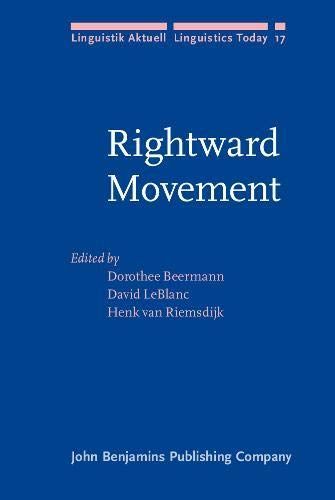
Rightward Movement
Symmetries and asymmetries have always played an important role in linguistic theorizing. From the early works on potentially universal properties of transformational processes, differences between rightward and leftward movement processes were noted and constituted a challenge to theories of conditions on transformations. The upward boundedness of extraposition rules vs. the successive cyclic character of question word movement, for example, remains a vexing problem. An idea which has gained considerable prominence in the most recent syntactic work, in particular Noam Chomsky's 'Minimalist Program' and Richard Kayne's 'Antisymmetry' proposal, is that rightward movement simply does not exist. This means, in essence, that what looks like an element that has been moved rightward is either base-generated in its surface position, or it is actually moved leftward but all its surrounding materials have been moved leftward even further. Clearly, these radical proposals have generated a large number of new analyses of the relevant phenomena, and they have fostered considerable controversy about the viability and desirability of this type of approach. The present volume brings together a representative group of articles discussing a variety of aspects of (apparent) rightward movement processes, including considerations having to do with parsing, and representing the various opposing lines of thought on this matter. Empirically, they cover a wide array of constructions (extraposition, scrambling, quantifier-floating, etc.) and languages ( American Sign Language, Bengali, Dutch, French, Frisian, German, Hindi, Japanese, Marathi, etc.).